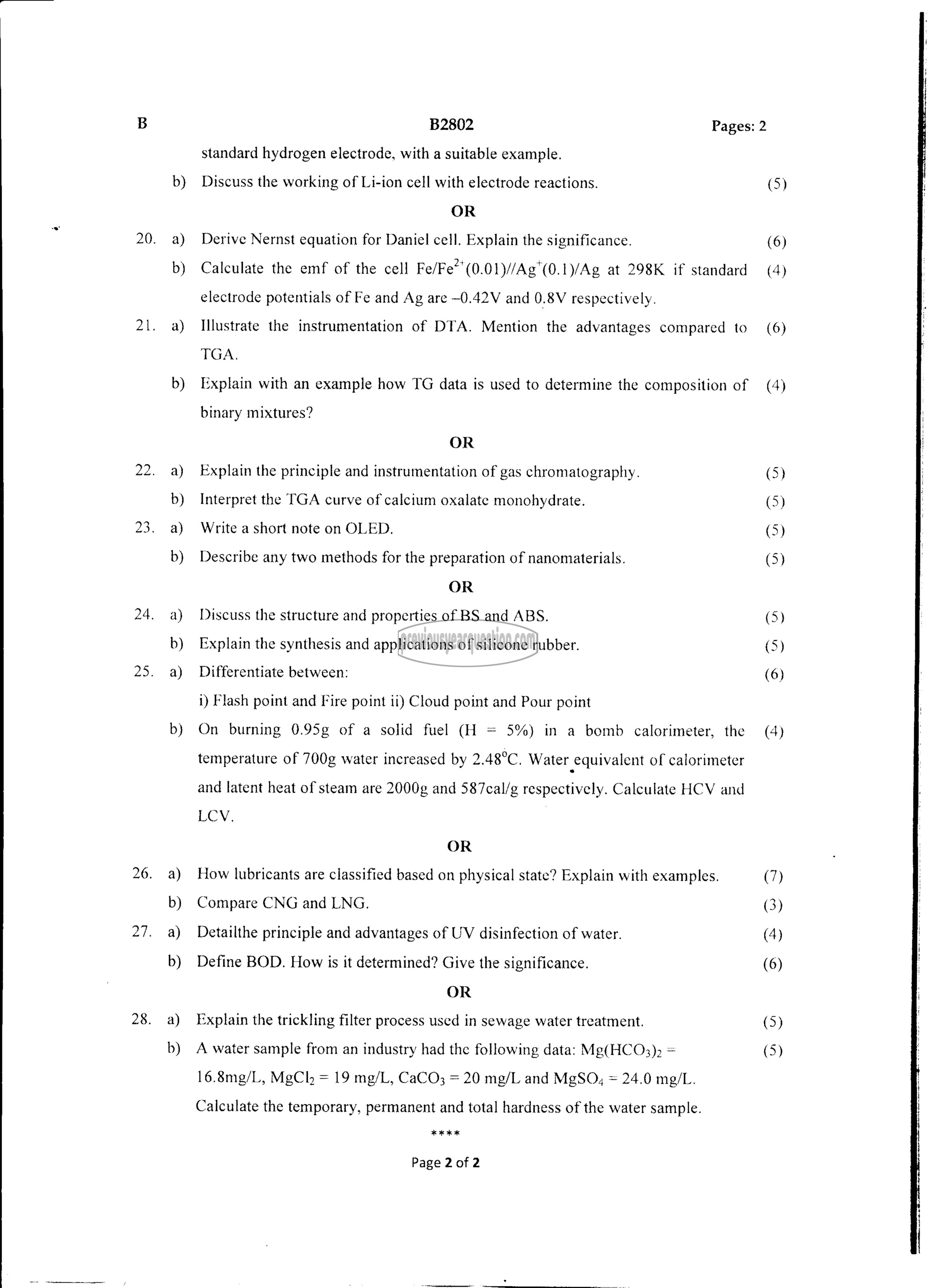APJ ABDUL KALAM TECHNOLOGICAL UNIVERSITY Previous Years Question Paper & Answer
Semester : S1 and S2
Subject : ENGINEERING CHEMISTRY
Year : 2018
Term : APRIL
Branch : MECHANICAL ENGINEERING
Scheme : 2015 Full Time
Course Code : CY 100
Page:2
B B2802 Pages: 2
standard hydrogen electrode, with a suitable example.
b) Discuss the working of Li-ion cell with electrode reactions. (5)
OR
20. a) Derive Nernst equation for Daniel cell. Explain the significance. (6)
b) Calculate the emf of the cell Fe/Fe”’(0.01)//Ag’(0.1)/Ag at 298K if standard (4)
electrode potentials of Fe and Ag are -0.42V and 0.8V respectively.
21. a) Illustrate the instrumentation of DTA. Mention the advantages compared 1൨ (6)
TGA.
b) Explain with an example how TG data is used to determine the composition of (4)
binary mixtures?
OR
22. a) Explain the principle and instrumentation of gas chromatography. (5)
0) Interpret the TGA curve of calcium oxalate monohydrate. (5)
23. a) Write a short note on OLED. (5)
b) Describe any two methods for the preparation of nanomaterials. (5)
OR
24. a) Discuss the structure and properties of BS and ABS. (5)
b) Explain the synthesis and applications of silicone rubber. (5)
25. a) Differentiate between: (6)
i) Flash point and Fire point ii) Cloud point and Pour point
b) On burning 0.95g of a solid fuel (11 = 5%) in a bomb calorimeter, the (4)
temperature of 700g water increased by 2.48°C. Water equivalent of calorimeter
and latent heat of steam are 2000g and 587cal/g respectively. Calculate HCV and
LCV.
OR
26. a) How lubricants are classified based on physical state? Explain with examples. (7)
b) Compare CNG and LNG. (3)
27. a) Detailthe principle and advantages of UV disinfection of water. (4)
b) Define BOD. How is it determined? Give the significance. (6)
OR
28. a) Explain the trickling filter process used in sewage water treatment. (೨)
b) A water sample from an industry had the following data: Mg(HCO3)2 = (5)
16.8mg/L, 11801) = 19 mg/L, ೮೩೮೦, = 20 mg/L and MgSO, = 24.0 mg/L.
Calculate the temporary, permanent and total hardness of the water sample.
KK
Page 2 of 2
